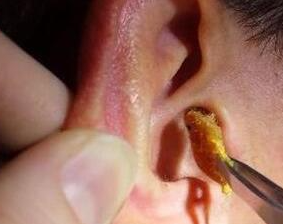
For something so small, earwax sure gets a bad reputation. We treat it as an unsightly nuisance, something to be vigorously removed with cotton swabs and over-the-counter kits. The beauty industry has convinced us that a clean ear is a healthy ear. But what if our bodies have a different, far wiser plan? What if that seemingly excessive production of earwax is not a design flaw, but a brilliant, active defense system?
The medical term for earwax is cerumen, and to think of it as mere “wax” is a gross understatement. It is a sophisticated, self-cleaning protective secretion, meticulously produced by thousands of tiny glands in your ear canal. And when your body ramps up production, it’s not being messy—it’s being strategic.
Excessive earwax production is your body’s natural defense against external invaders and internal irritation.
Let’s pull back the curtain on this sticky, miraculous substance and discover what it’s truly protecting you from.
The Shield Against Microbial Invasion
Your ear canal is a warm, dark tunnel leading to one of your most delicate organs: the eardrum. To bacteria and fungi, this is prime real estate. Cerumen is the security detail that keeps them from setting up camp.
- The Arsenal: Earwax is slightly acidic, creating an environment that is hostile to the growth of bacteria and fungi. It’s also naturally sticky, designed to trap dust, spores, and microbes before they can travel deeper into the ear. Think of it as flypaper hanging in the entryway of your inner ear.
- The Message: If you’re experiencing a noticeable increase in wax, your body may be responding to a perceived increase in microbial threats in your environment. It’s building up its frontline defenses.
The Barrier Against Physical Intruders
The world is a dusty, dirty place. Every time you walk through a dusty room, shake out a rug, or are outside on a windy day, your ears are under assault from tiny particles.
- The Mechanism: The sticky, viscous nature of earwax is perfect for capturing these fine particles. It acts like a silt fence on a construction site, stopping debris from flowing further in. Without this barrier, that dust and dirt could accumulate against your eardrum, causing irritation, muffled hearing, and even infection.
- The Message: An uptick in production can be your body’s response to a drier, dustier environment, or a change in season. It’s simply manufacturing more of its patented “dust-trapping” formula.
The Defense Against Chronic Moisture (Swimmer’s Ear)
For those who spend a lot of time in the water, earwax is a first-line defense against a common foe: swimmer’s ear (otitis externa).
- The Science: While it might seem counterintuitive, earwax is water-repellent (hydrophobic). It helps to coat the skin of the ear canal and prevent it from becoming waterlogged. A waterlogged ear canal has a compromised skin barrier, making it easy for bacteria to invade and cause a painful infection.
- The Message: If you’re a swimmer or live in a humid climate and notice more wax, your body is likely producing a protective, waterproof coating to keep the delicate skin of your ear canal dry and intact.
The Response to Internal Aggravation
Sometimes, the threat isn’t from the outside world, but from our own habits. The most common aggravator? The cotton swab.
- The Vicious Cycle: When you use a cotton swab, you often push the protective wax deeper, where it can become impacted. But more insidiously, the swab irritates the delicate skin of the ear canal. The body perceives this irritation as an attack. Its response? To produce more of its protective salve—the wax—to soothe and shield the irritated skin. You create the very problem you’re trying to solve.
- The Message: If you are a frequent user of cotton swabs and feel like you have “excessive” wax, you have likely trapped your body in a futile feedback loop of defense and irritation.
The Right Way to “Manage” Your Body’s Defense System
The golden rule of earwax is: Don’t put anything smaller than your elbow in your ear.
- Let It Do Its Job: For the vast majority of people, the ear is self-cleaning. Old earwax naturally migrates from the canal to the ear opening, where it dries up and flakes away unnoticed.
- Clean Only the Outside: Use a washcloth to clean the outer ear (the pinna). Do not enter the canal.
- Seek Professional Help for Blockages: If you experience symptoms of a true blockage—such as a feeling of fullness, significant hearing loss, earache, or ringing in the ears—see a doctor. They can safely and painlessly remove the impaction with specialized tools.
Excessive earwax production is not a sign of poor hygiene. It is a testament to your body’s innate intelligence. It is actively manufacturing a sophisticated, multi-purpose defense gel to guard one of your most precious senses. By understanding its purpose and resisting the urge to interfere, you are honoring one of your body’s oldest and most effective security systems.